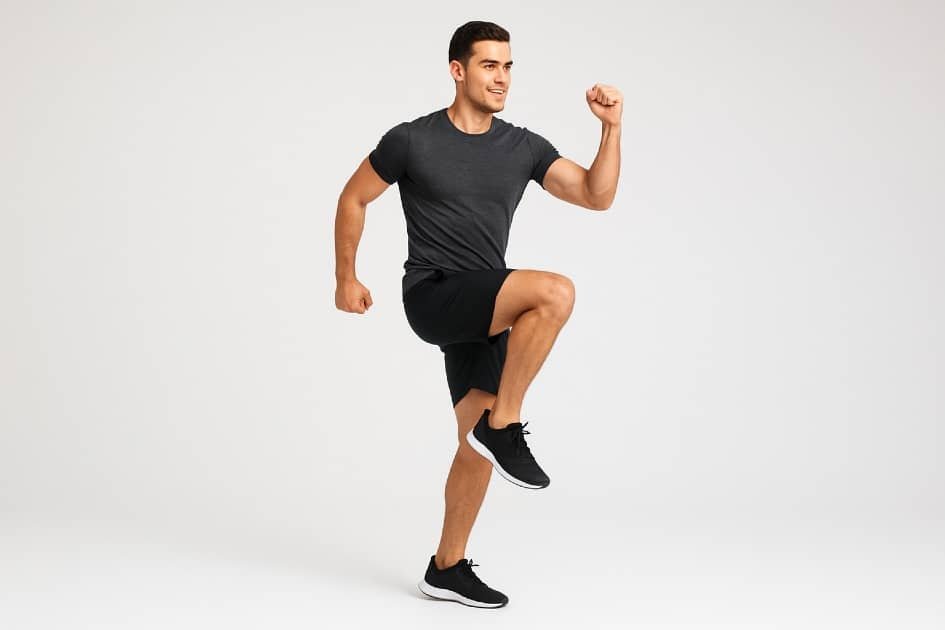Fitness is not just about sculpting muscles or chasing a smaller waistline; it is about igniting the spark inside you to live fully. It is about energized, resilient, and gracefully carrying you into every new season of life.
Fitness’s beauty lies in its adaptability, as even a few minutes a day can sharpen mental clarity, boost circulation, and protect the heart. Over time, these small, consistent choices create a shield against fatigue, chronic pain, and premature aging.
Regular fitness routines reduce inflammation, support cellular repair, enhance flexibility, and improve memory, mood, and longevity, according to Harvard Health researchers.
Fitness offers emotional benefits and a sense of mastery, empowering individuals to conquer challenges and maintain their strength.
It is timeless and suitable for all ages. Create a fitness routine that fuels both body and mind with support tools like resistance bands and adjustable dumbbells making strength training accessible at home.
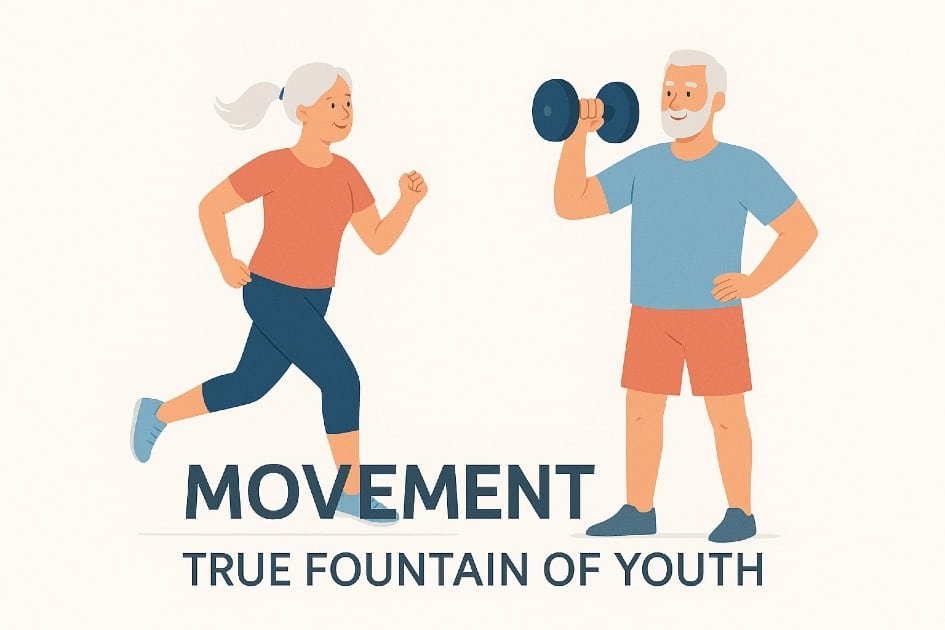
Why Movement Is the True Fountain of Youth
Regular movement is the key to staying young, shaping your body’s feelings, aging, and energy levels, making it the closest thing to a true fountain of youth.
Movement Slows the Clock on Aging
Age-related fears of losing strength, flexibility, and independence are often exacerbated by sedentary habits, but daily fitness routines like walking and resistance training can significantly slow this decline.
Start with bodyweight exercises at home, such as squats and push-ups, to reawaken muscles, gradually build towards resistance training using simple tools like dumbbells or resistance bands.
One of my clients in her late sixties began with chair yoga and short walks. After six months, her posture improved, and she told me she felt “years younger.” Moving did not just slow aging—it gave her confidence back.
Energy Is Made, Not Lost, Through Movement
Rest often promotes energy, but excessive rest can drain it. True vitality comes from challenging the heart and lungs, increasing blood flow, and promoting fitness.
Energy bursts, short breaks during the day, such as jumping jacks, stair climbs, or dancing, provide a natural energy shot without caffeine.
I traded my afternoon coffee for a quick 10-minute jog. I expected to feel worn out, but instead, my focus got sharper, and I worked better. The energy from moving lasts longer than any cup of coffee.
Movement Sharpens the Mind and Mood
Aging involves mental and emotional balance, with fitness being a popular form of therapy due to its ability to release endorphins, reduce stress, and boost memory.
Mindful movement, such as yoga, tai chi, or slow stretching, can calm the mind and engage the body. Mind-body platforms offer guided classes for beginners.
After dealing with burnout, I added 15 minutes of yoga flow into my mornings. It was not just my flexibility that improved. My mood stabilized, and I felt more present throughout the day.
Why Movement Outshines Quick Fixes
The market offers numerous anti-aging products, but they are superficial and superficial. Real youthfulness comes from within, with regular exercise improving circulation, enhancing skin, and maintaining strong posture.
A 20-minute walk after meals, combined with a whole food diet, significantly enhances longevity compared to most “miracle” products.
My friend loved buying pricey serums, yet she still felt tired. After she began evening walk, everyone noticed her fresh glow. It did not come from a bottle—it came from better blood flow and real energy.
The Ripple Effect of Staying Active
Movement benefits not only physical youth but also sleep, immunity, memory, and confidence. Commit to fitness and reap rewards unmatched by shortcuts.
Engage in social movement, such as walking with friends, joining fitness classes, or participating in online group workouts, to make it a lifestyle rather than a chore.
I joined a weekend hiking group to stay on track. What began as fitness turned into a community that makes exercise the best part of my week. Hiking gives me energy and friends that keep me young at heart.
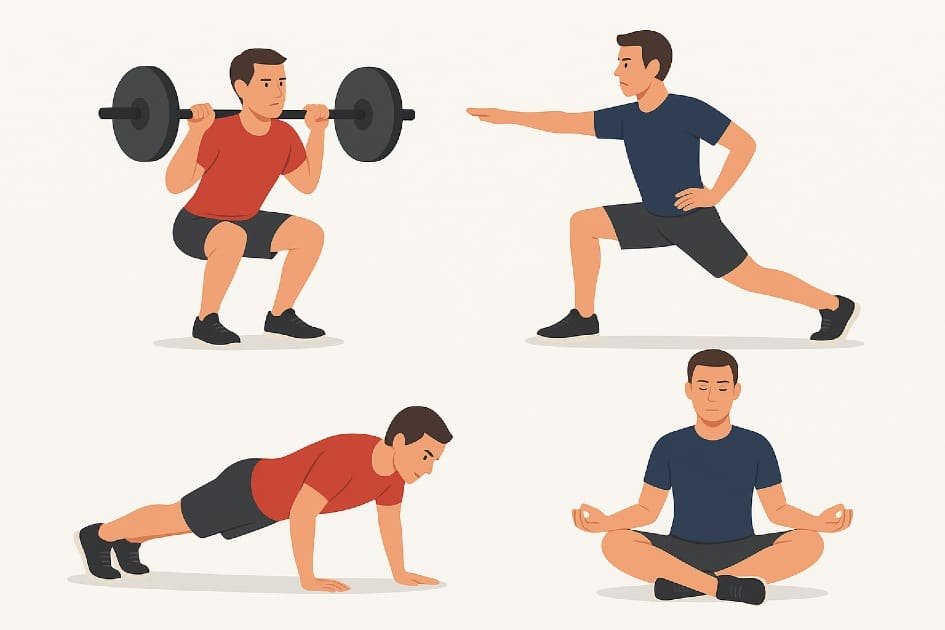
Building Strength That Lasts a Lifetime
Strength is not just for bodybuilders or athletes; it is a lifelong skill that allows for ease of movement, energy, and independence. It is never too late to build it.
Resistance Training Moves That Fight Muscle Loss
Resistance training, using simple tools like resistance bands, dumbbells, or water bottles, can help reverse the decline in muscle mass and metabolism as we age.
Start with 2-3 weekly sessions of compound moves like squats, push-ups, and rows, engaging multiple muscles simultaneously. Consider a beginner-friendly strength kit for home workouts if you are unsure.
The introduction of resistance bands to my routine significantly improved my posture, reduced stress from desk sitting, and increased my confidence during daily tasks.
Bodyweight Exercises You Can Do Anywhere
Gym access is not necessary for building lasting strength; body exercises like planks, lunges, and bridges strengthen the core and lower body.
Create a 15-minute bodyweight circuit involving squats, lunges, planks, and push-ups with minimal rest to improve endurance and balance.
I remember doing lunges in my living room during a hectic work week. It was a reminder that strength does not demand fancy equipment or an elaborate schedule. Consistency matters far more than location.
Lifting for Bone Health and Joint Protection
Strength training not only strengthens muscles but also shields bones and joints by stimulating bone density, reducing osteoporosis risk, and reducing joint pain over time.
Add light dumbbells or kettlebells twice a week to your workout, focusing on controlled movements like deadlifts, overhead presses, and weighted carries. Consult a joint-friendly program if joint pain persists.
Harvard Health suggests that regular exercise can help prevent disease-causing cellular damage and slow down the aging process.
After I started carrying heavy grocery bags, it felt easier to carry. My shoulders did not hurt anymore. It was not about huge weights—it was about building strength I could use every day.
Why Strength is the Backbone of Fitness Longevity
Strength is the foundation of your fitness journey, ensuring smoother and more enjoyable fitness experiences like walking and yoga.
Integrate strength training with other fitness activities, such as squats before yoga or push-ups after a walk, to maintain body adaptability and resilience.
Strength is about living fully, vibrantly, and without hesitation. Through resistance training, bodyweight moves, and bone-protective lifts, you can cultivate a body that supports you for decades, ensuring your fitness journey remains thriving.
When I made strength the focus of my workouts, my cardio felt easier, and my yoga became more flexible. Strength was the key that connected every part of my fitness.
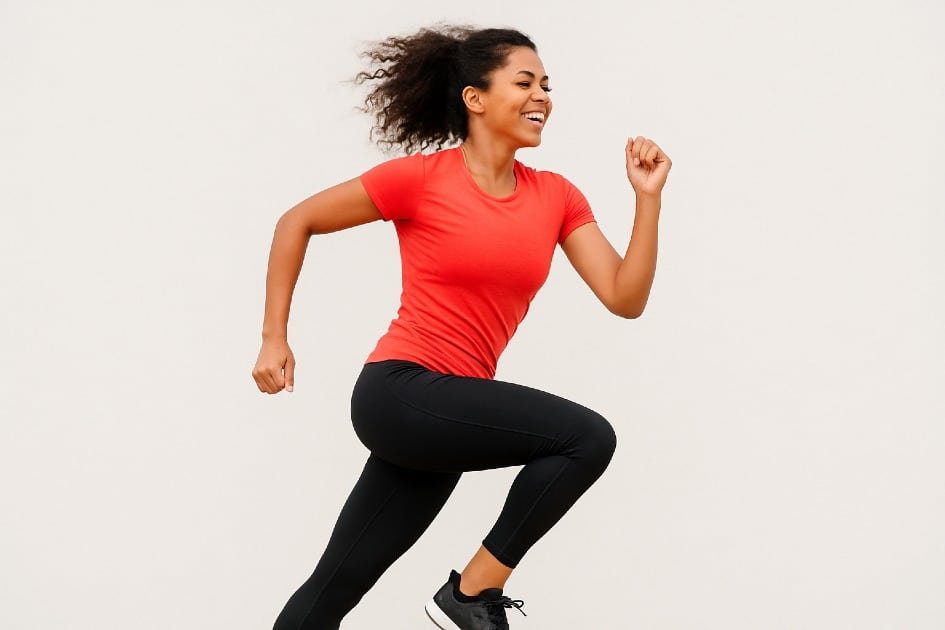
Energizing Cardio That Keeps Your Heart Young
Cardio is not just a calorie-burner; it is a heart-boosting, mood booster, and lifelong vitality weapon. When done correctly, it can make you feel stronger, sharper, and ready for the day.
Low-Impact Cardio Moves That Build Endurance
Many individuals avoid cardio due to concerns about joint discomfort or the long treadmill workouts.
Low-impact fitness routines like walking, swimming, or cycling are joint-friendly yet effective for cardiovascular health, strengthening lungs, improving circulation, and building stamina without causing soreness.
I have noticed that a morning walk clears my mind and creates a positive mood for the day. Wearing ankle weights or a light vest adds gentle resistance and gives the heart a healthy push.
You do not need long workouts, just 20 to 30 minutes each day makes a significant difference. If you prefer staying home, an elliptical machine is a simple way to keep your heart strong without going to the gym.
Interval Training for a Quick Energy Boost
HIIT offers efficient fat burning, metabolism stimulation, and heart adaptation through short recovery periods, making it an effective workout option for limited time.
When I added short sprints to my workouts, my energy and stamina shot up. Just 15 minutes of HIIT can keep you feeling strong and full of life for hours.
Start with 30 seconds of fast-paced movement, followed by one minute of slow walking, for 10-15 minutes. Use a HIIT workout app for structured routines.
Fun Cardio Options That Feel Less Like a Workout
Choose fitness activities that feel like play, like dancing, hiking, or joining a recreational sports league, to make cardio enjoyable and less monotonous.
If you enjoy staying home, try streaming a dance workout or joining a guided Zumba class to keep moving. Harvard Health says exercise also helps lower stress and ease depression.
I tried a weekend dance fitness class once, and it quickly became one of my favorite ways to stay fit. The music, the people, and the fun made me forget I was even working out.
Why Cardio is the Heartbeat of Lifelong Fitness
Cardio not only burns calories but also maintains heart health and energy through low-impact endurance, time-efficient intervals, and fun workouts, requiring consistency.
Fitness becomes a lifestyle staple, transforming from a chore to a secret to maintaining youth, strength, and energy.
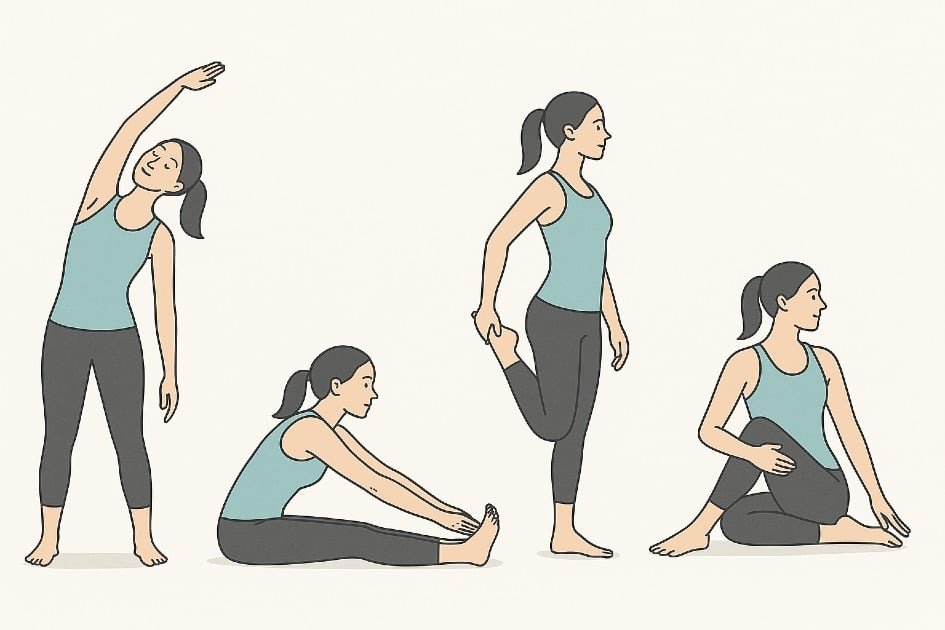
Flexibility Moves for a Youthful, Pain-Free Body
Children’s effortless movement is lost in adults over time, but intentional flexibility can restore this freedom.
A flexible body moves younger and reduces stiffness, improves posture, and increases energy in everyday life when combined with smart fitness habits.
Why Flexibility Is the Missing Link in Fitness
Many people prioritize strength and cardio without considering flexibility, which can lead to tight muscles and restricted movement, causing pain, reduced range of motion, and increased injury risk.
Focus on flexibility as a key part of your fitness routine, incorporating stretching and mobility work regularly. This can help alleviate lower back pain, allowing you to sit, stand, and bend without discomfort.
Stretches That Improve Posture and Balance
Sitting for extended periods can cause a hunch in the shoulders and compression of the spine, resulting not only in an older appearance but also a heightened sense of aging.
- Chest Openers: Stretching the chest reverses slouching and opens your lungs for better breathing.
- Hip Flexor Stretches: These counteract long hours of sitting and keep your stride youthful.
- Standing Quad Stretch: This simple move improves balance while loosening tight thigh muscles.
The simple yet transformative moves, when combined with a supportive foam roller, can expedite recovery and enhance posture improvements.
Mobility Exercises for Smooth, Pain-Free Joints
Stiff joints are early signs of aging, causing the body to feel locked up and making daily tasks harder.
- Cat-Cow Flow: A gentle spine mobilizer that also calms the nervous system.
- Ankle Circles: Essential for strong, pain-free steps and balance.
- Shoulder Rotations: Keep your upper body limber and reduce neck strain.
I started adding these moves to my morning routine, and the change was clear. Walking felt easier. My knees stopped hurting on the stairs. This is fitness for life—mobility keeps your body strong and ready.
Gentle Yoga Poses That Ease Stiffness
Yoga is a highly effective method for incorporating flexibility into fitness, focusing on connecting breath with movement and releasing tension.
- Child’s Pose: A restorative posture that relieves lower back tension.
- Seated Forward Fold: Stretches the hamstrings and soothes the nervous system.
- Supine Spinal Twist: Unlocks the spine while calming the mind.
Daily yoga practice, lasting 10-15 minutes, can significantly improve body sensation, with a soft yoga mat providing comfort and stability.
Everyday Benefits of a Flexible Body
Flexibility training enhances daily life by making tasks easier, reducing neck tension, and reducing headaches and soreness after workouts, making it beneficial for everyday activities.
Flexibility practice led to increased energy, enjoyable fitness sessions, and shorter recovery time, as muscles were not locked tight and the body did not waste energy.
Bringing It All Together
Flexibility is a crucial component of youthful fitness, promoting a lighter, more resilient body through stretches, mobility drills, and yoga poses, enhancing strength and stamina.
Start small with five minutes of daily flexibility moves, and consider using tools like stretch straps. to deepen your practice, as flexibility ensures a lifetime of health benefits.
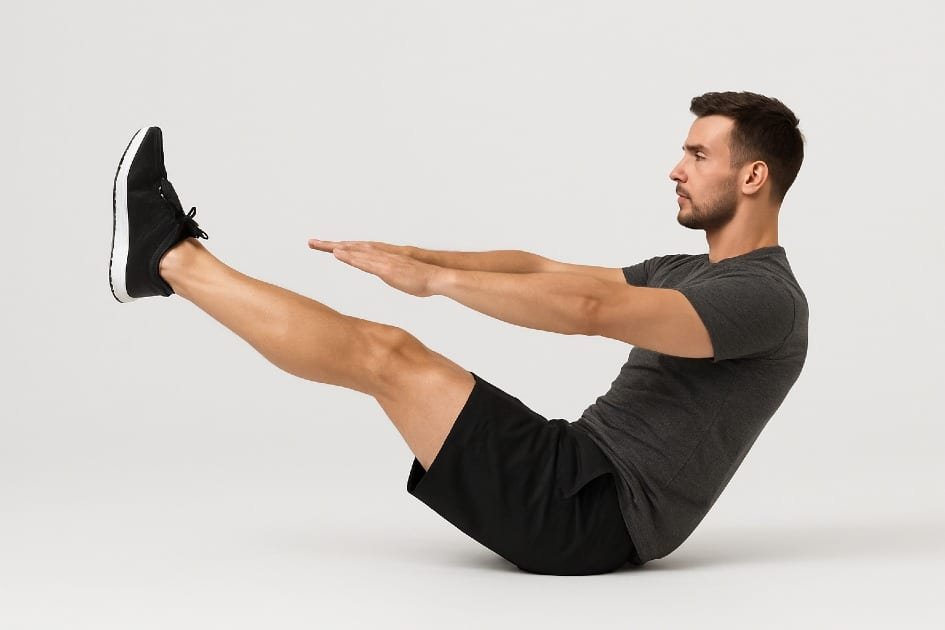
Core Power: The Center of Your Strength and Stability
The core, a vital component of strength, stability, and youthful energy, is evaluated by even the smallest movements like bending or reaching. Its resilience is crucial for maintaining confidence and overcoming challenges in other fitness aspects.
Why Your Core Is More Than Just Abs
The core, a network of muscles around the torso, stabilizes the spine, improves posture, and prevents injury. Weaknesses can lead to back pain, sluggish movements, and poor fitness performance.
Strengthen rectus abdominis muscles and deep stabilizers like transverse abdominis and multifidus, acting as an internal corset, protecting the spine and supporting daily movement.
I often felt tightness in my lower back after long days at work. When I started doing planks and core twists, the pain eased, and I gained more energy for workouts and daily tasks.
Simple Ab Moves for Everyday Strength
To achieve a youthful and stronger appearance, it is essential to engage your entire core in exercises.
- Plank variations: Side planks and forearm planks challenge stability from multiple angles.
- Bird dog exercise: Builds coordination and reduces spinal stress.
- Dead bug: Strengthens deep core muscles while teaching control.
Add a core stability ball to your home routine to create instability and activate deeper muscles for balance.
Core Training Beyond Crunches
Traditional core workouts can lead to monotony and plateaus, so it is essential to diversify your training to avoid overwhelming results.
- Rotational exercises like Russian twists or medicine ball throws mimic real-life movements.
- Compound lifts such as squats and deadlifts engage the core as stabilizers, boosting total-body fitness.
- Pilates-inspired moves build endurance in often-neglected stabilizing muscles.
When I replaced half my ab workouts with rotation moves, my running and lifting got better. Exercise felt more fun, and even daily tasks became easier.
Everyday Benefits of a Strong Midsection
A stable core enhances stability, prevents falls, and protects against injury. It also improves breathing efficiency, enhancing stamina during workouts and walks.
Wearable posture trainers provide real-time feedback, enhancing midsection strength even during cooking or walking, and can be integrated into daily activities.
The Core and Longevity in Fitness
Core strength is crucial for graceful aging, as weak muscles increase the risk of falls, injuries, and chronic pain. Core training combats this decline by maintaining agility and strength.
To optimize your fitness routine, dedicate at least 10 minutes of core-focused exercises three times a week, and ensure proper nutrition and hydration for recovery.
I have watched clients in their 50s and 60s build strength and confidence through steady core workouts. It shows that age does not block fitness progress.
Recap: Keep Moving, Keep Living, Keep Thriving
The body functions as an engine, thriving when in motion. Exercise, stretching, lifting, and intentional steps preserve vitality, not just for the young. Fitness focuses on building a resilient body and spirit that resists aging, not chasing perfection.
Consistent fitness habits boost energy, confidence, and daily life. Starting with a walk in the morning and strengthening moves in the evening can lead to clarity and a lighter workday, demonstrating the transformative power of fitness.
Small bursts of movement, such as stretching before bed or core sequences, can recharge the system and maintain momentum. Fitness does not require expensive memberships, but incorporating structure like dumbbells or yoga mat can make home workouts more enjoyable.
Your nutrition also plays a crucial role in how far your fitness journey takes you. Refueling with whole foods, staying hydrated, and using the right supplements can elevate recovery and performance.
According to Harvard Health, a healthy diet is rich in fiber, whole grains, fresh fruits and vegetables, ‘good’ or unsaturated fats, and omega-3 fatty acids … Physical activity is also necessary for good health.
To thrive, honor small promises made to yourself daily, move with purpose, live with energy, and adopt a fitness mindset that views aging as a journey of strength, not decline.
Frequently Asked Questions
How much exercise do I really need to stay youthful?
To maintain fitness, aim for 150 minutes of moderate activity per week, or 75 minutes of vigorous movement.
Consistency is key, as even short bursts can support body resilience. Stay engaged daily through structured workouts or everyday motion.
Can I start these moves later in life and still see results?
Fitness is not age-bound but rather commitment. Strength and flexibility gains can be made even in the 60s, 70s, and beyond.
Start with low-impact exercises like chair squats, light resistance training, or mindful stretching to rebuild stamina and protect joints.
What is more important: strength, cardio, or flexibility?
Fitness is a three-legged approach: strength builds muscle, cardio energizes heart and lungs, and flexibility keeps joints supple and pain-free. A well-rounded routine supports vitality from every angle.
Do I need a gym, or can I stay fit at home?
Fitness does not require gym membership; gyms offer equipment variety, but living rooms, backyards, or parks can serve as training grounds. Bodyweight moves, adjustable dumbbells, resistance bands, and household items can be used.
Virtual programs or compact gear can make home fitness effective and enjoyable.
How do I stay motivated when I feel tired or busy?
Motivation is fueled by small wins, so focus on progress rather than perfection. Exercise is an energy generator, so incorporate it into your routine with enjoyable habits.
Tracking milestones helps maintain consistency and stability during busy times.
Can fitness improve my mental health as well as my body?
Regular exercise, such as yoga or tai chi, not only boosts endorphins, which calm stress and elevate mood, but also sharpens focus and promotes emotional balance, building physical strength and a resilient outlook.
Is it possible to overdo fitness?
Balance your fitness routine with restorative days, listen to your body’s cues, and incorporate recovery practices like foam rollers or gentle stretching for sustainable fitness, not exhaustion.
How can I make fitness more enjoyable instead of a chore?
Aligning fitness with your personality and lifestyle makes it easier. Choose variety of activities like dance, swimming, cycling, or group classes.
Set playful goals for enjoyment, and fitness becomes a lifelong habit when enjoyable.

